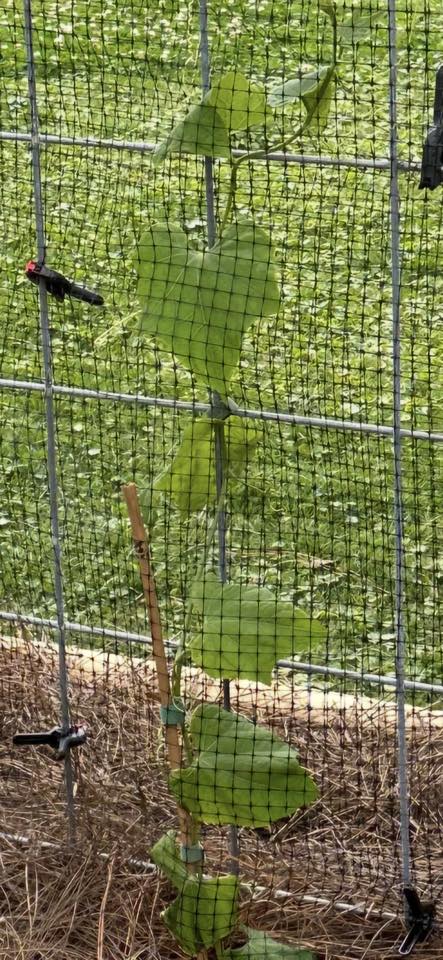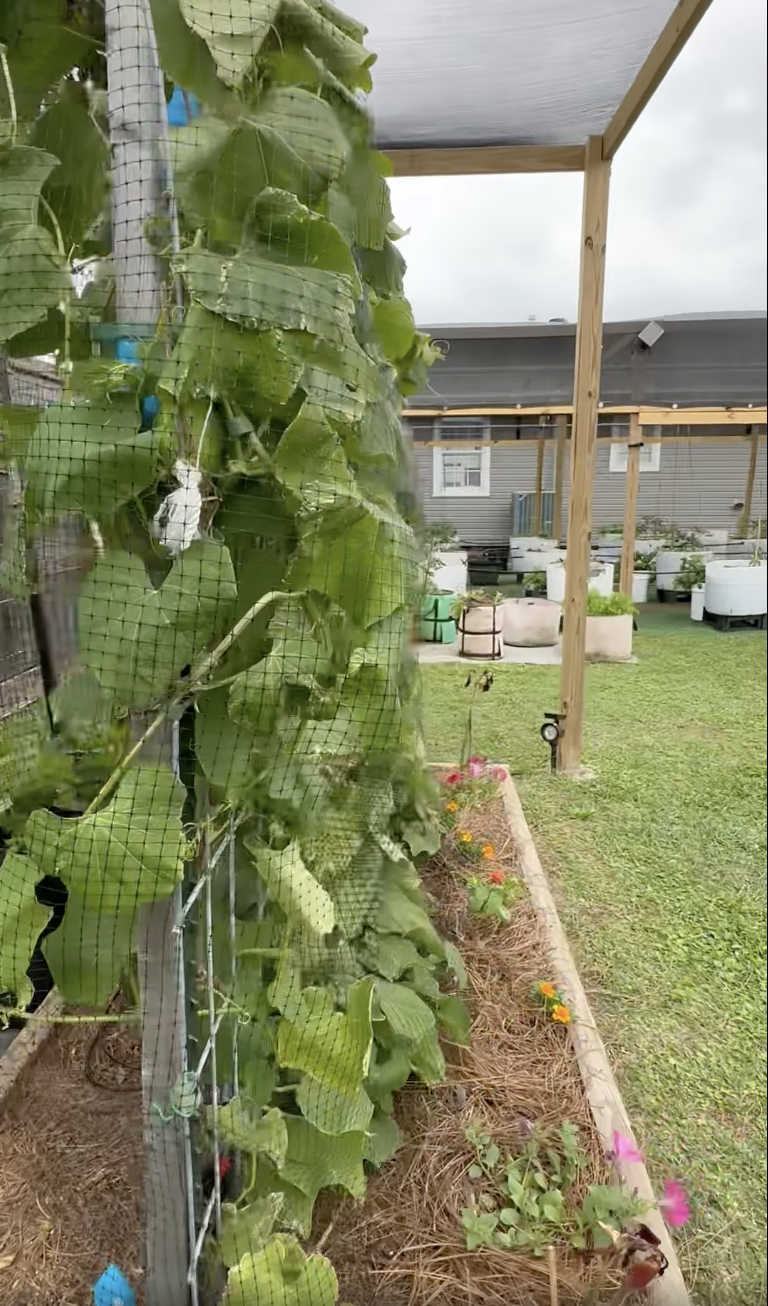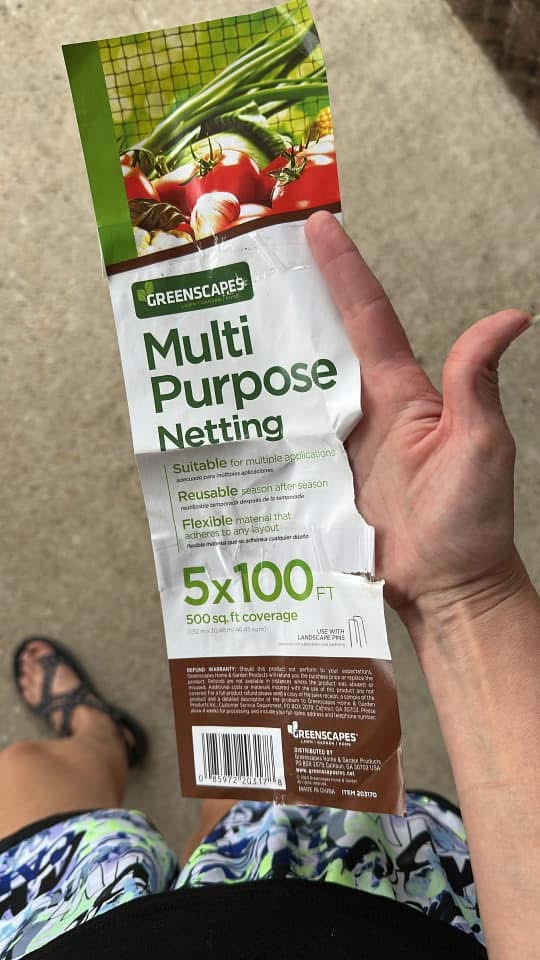Strong winds and hurricanes can shred a mirliton vine and stress it enough to delay or even stop flowering.
Michelle Impastato Glore discovered an ingenious way to inexpensively and quickly protect the vine from winds: netting. It’s the most effective way to protect your vines from wind damage–even in hurricane winds.
With young plants, she sandwiches them between two layers of netting and secures it to the trellis on both sides with clips. She pushes the tips of the clips through both sides so they hold the vine snugly but not so tightly that it breaks the stems.
To protect her large, mature vine, she wraps the entire vine with netting on both sides and secures it with velcro and or plastic tape.
Both vines survived gusts of 20 mph, and the large vine should have sustained gusts up to 70 mph.
The netting comes in many sizes at Tractor Supply and other stores, including this large roll for big vines.
Watch the video here of Michelle’s vine after 70 mph gusts. The vine had grown through the netting, so she had to cut holes in it before removing it.

New plant sandwiched in with netting clipped to trellis.

Netting wrapped around large vine.

Garden netting.